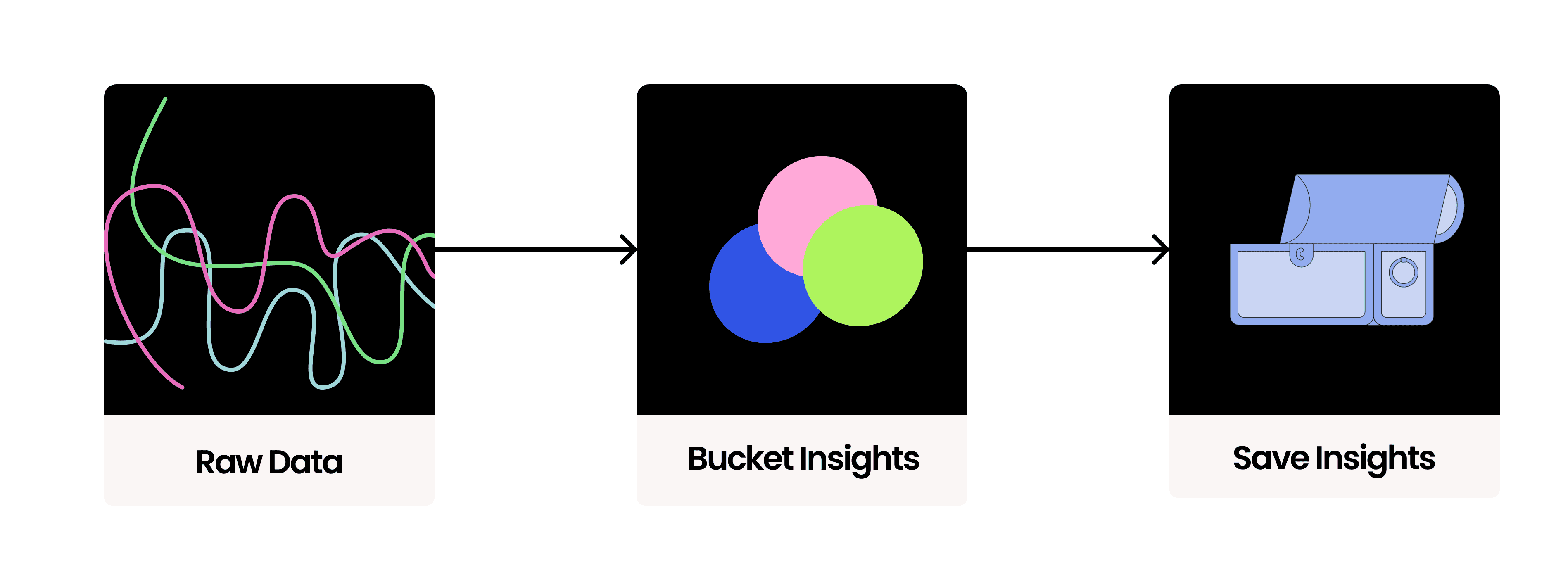
Respository
A repository acts as a central location where you can save all of your user research and insights. It is also a long term solution to managing all of the past research insights. It also helps to notice trends in insights that we have collected after doing various research activities.
Why this is useful:
It helps to facilitate design decisions by having them all grouped in one place that you as a team can quickly pull insights from.
It can provide very specific recommendations on screen designs. Let’s say you are designing the send screen of a lightning wallet. You can simply dive in into the repository and pull out insights from that particular part of the UI.
The repository can also be used as a place where the team can go back and see who was interviewed in the past and contact those people again or decide to contact a different group of people.
Bitcoin and Lightning
Teams working on open source Bitcoin and Lightning projects often have user insights coming in from various sources. These can be sources such:
Github issues which users filed
Research that’s been done
Telegram groups
Slack/Discord
Social media comments
This can sometimes result in the data feeling scattered and so pulling direct insights could be tricky.
Pooling together this information into one easy place where the whole team can access it leads to an open collaborative space where data is shared openly with everyone.
Creating a repository
The place where the user insights lives is totally up to you and your team. We’ll provide some tools below which you can choose to use.
There are 3 basic steps when structuring a repository:
Capture the raw data
These would be your transcripts/insights from user research conducted. Well captured data allows for easy analysis as well as a quick way to generate insights. User comments/feedback can then be grouped by their source: GitHub issue, interviews, surveys, Telegram groups, and the like. It also helps to date this raw data.
Bucket the insights
Next you’ll sort through the data to bucket the raw data into insights. This can be done in a super simple way. For example using:
Highlighting insights on the transcript
User insights can be grouped into different sections, so for example they would be grouped into the part of the user flow that it is being referred to (awareness, conversion, onboarding, etc.). So all insights from the landing page to the send screen of the wallet will be grouped together in this data base.
Save the insights
Next you’ll store these insights somewhere. These can be saved in Github or Notion. You can choose to store these anywhere as long as it works for you and the team and it allows you to easily grab insights and share it.
Share the insights with the team in a visual way. What is most important is that the insights are shared within the team at the right time and that you as a team can quickly pull the insights and share them.
Example
The below example is a Github repository for Bitcoin Core App. This is a repository for the first milestone.
Tagging is used to do the following:
Screenstate: Indicate which part of the screenstate the insight is referring to
Research method: Indicate which research method was used
Design/Development: Indicate whether is might be a design or development related issue

